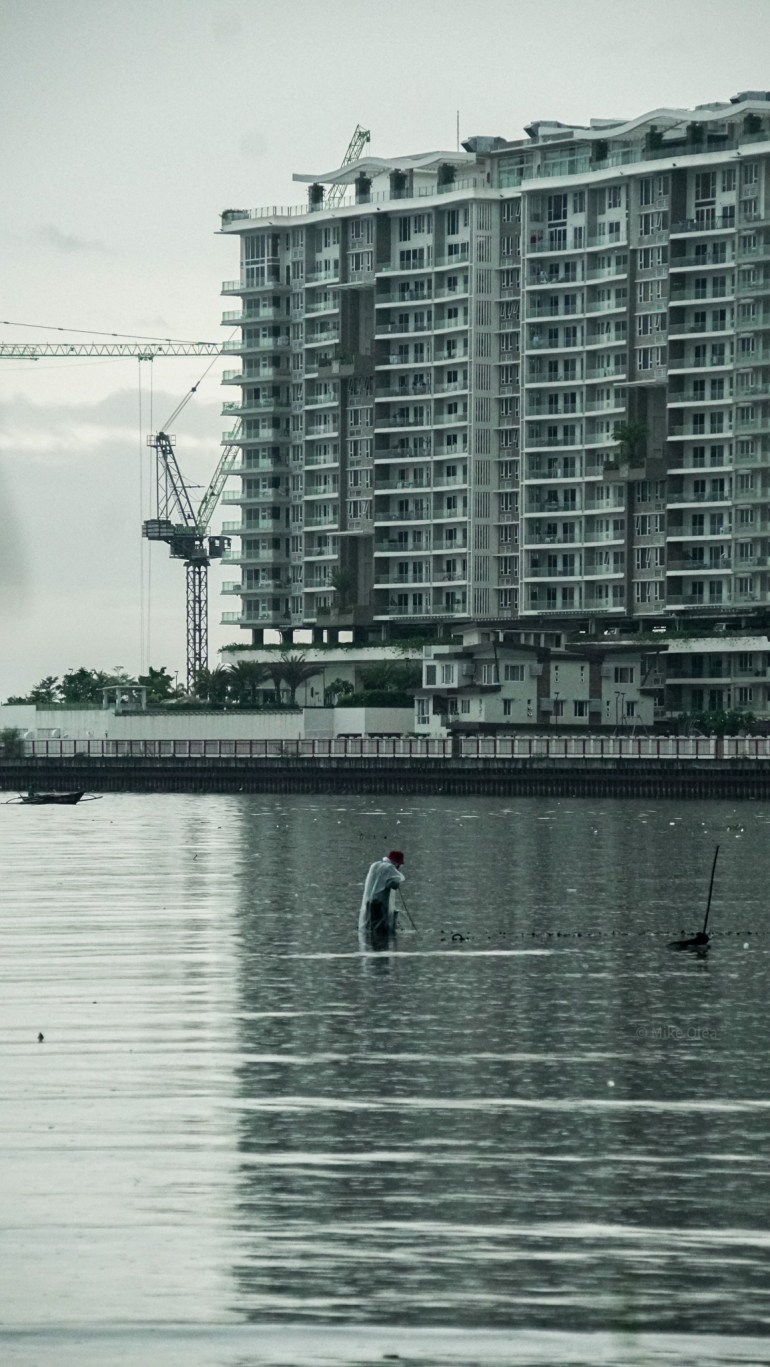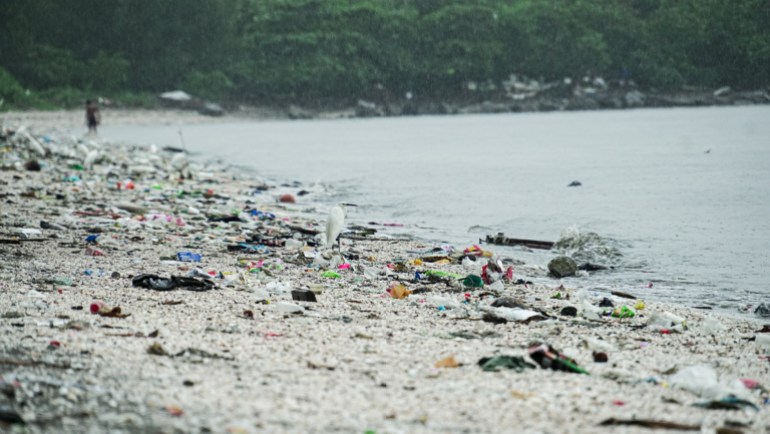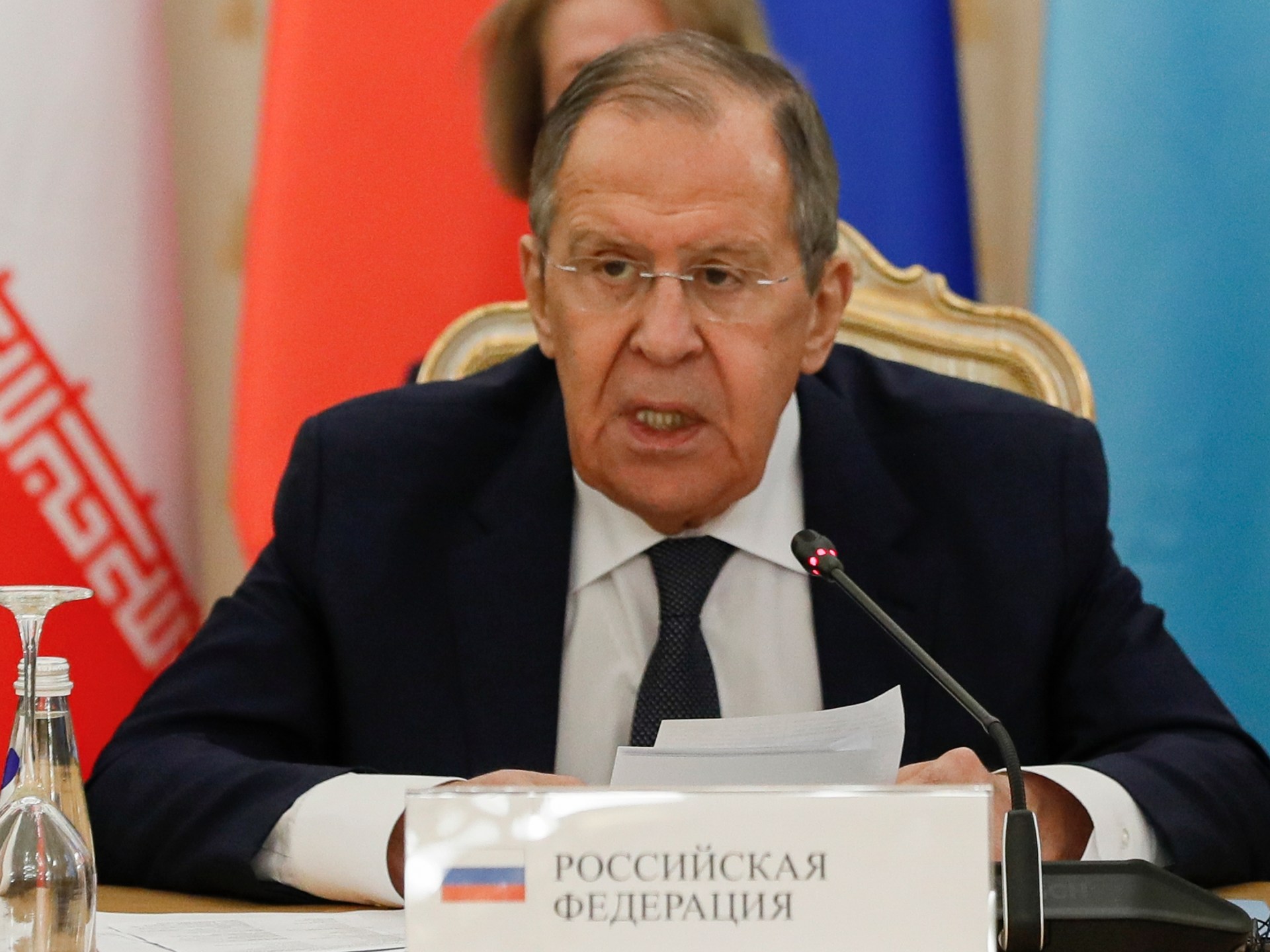
Manila, Philippines – After Typhoon Doksuri hit the Philippines earlier this year, Pastor Thaad Samson waded through waist-deep water as he went door-to-door to check on his neighbors.
Seventeen towns in his home province of Bulacan were paralyzed by days of flooding after the typhoon hit the archipelago in July.
When the rains began, Samson’s community was unfazed as it is on land “as high as the top of a cathedral”, but it didn’t take long for residents to call for help, Samson told Al Jazeera.
“Those cities that didn’t have flooding before are now getting a taste of it,” Samson said.
Samson blames reclamation projects in the region for his community’s sudden vulnerability to extreme weather.
“It’s not just my opinion, it’s a scientific fact,” he said.
In 2017, the Philippine government spearheaded 13 land reclamation projects along Manila Bay, spanning five provinces including Metro Manila and Bulacan.
While civil society groups and lawmakers warned of potential damage to the environment, Manila pointed to massive spending on climate-related projects aimed at offsetting the risks and negative impacts of large-scale developments.
But for environmentalists like Samson, Manila’s climate spending is nothing more than an attempt to greenwash environmentally damaging development projects like redevelopment.
“They are destroying mangroves on 15,000 hectares of water. “I don’t understand how this is going to protect us from climate change, especially when flooding has increased in surrounding areas,” Samson said.
The Philippines experiences 20 typhoons every year. According to the World Bank, floods caused by typhoons over the past three decades have claimed about 30,000 lives, in addition to massive economic losses.
Since 2009, the Philippine government’s climate-related spending has increased sharply, with most spending going toward infrastructure.
According to the Ministry of Budget and Management (DBM), “climate protection measures have been anchored and institutionalized in our development plan and the state budget.” This led to a significant increase in the budget for climate change adaptation and mitigation measures by around 60 percent Compared to last year’s equipment.”
For 2024, the Philippines has proposed allocating 543.45 billion pesos ($9.74 billion) for climate spending, a 17 percent increase in spending over the current year, which was already 60 percent higher than 2022.
Climate spending accounts for 9.4 percent of the country’s total budget, with the DBM proudly announcing that this figure exceeds the country’s 8 percent commitment under the latest Philippine development plan.
President Ferdinand Marcos Jr. noted in November that economic development depends on recognizing the country’s vulnerability to climate change.
“It is the basis on which we must act for the future, on which we must design our systems. We have to keep climate change in mind,” Marcos said.
Some 461.5 billion pesos ($8.27 billion), or 84.9 percent of the spending, is earmarked for flood control or railway construction, with much of the formerly associated land reclamation in Manila Bay touted as the latter touted to reduce carbon emissions.
Despite being called climate spending, critics question whether such spending has more to do with supporting the government’s policy agenda than climate, and whether it could actually cause more damage to ecosystems.
“Our country’s entire climate program is just lip service,” Arlene Brosas, deputy minority leader in the Philippine House of Representatives, told Al Jazeera.
“When the world asks what the Philippines is doing about climate change, we will have to show new trains and inadequate flood protection, plus significantly less mangroves and farmland,” Brosas added.
Climate spending disbursed through special purpose funds (SPFs), which allocate money to broad use categories rather than specific projects, is an emerging trend in the country, according to Brosas, who argues that the funds are vulnerable to corruption and an example of “climate.” Philippines Pork” was distributed “for those who have no interest in actual results.”

According to the government’s plans, SPFs earmarked for climate change mitigation and adaptation are expected to increase by about 68 percent next year compared to the current allocation, reaching 22.47 billion pesos (US$400 million).
Still, Manila cannot say what the money will be used for, aside from supporting the adaptation and mitigation efforts of government companies and local governments.
University of the Philippines Professor Timothy Cipriano, an environmental geographer with national research group AGHAM, said labeling climate spending was “technically correct” but distracted from better solutions to climate change.
“Using infrastructure as a solution to climate change is outdated. Too often in the Philippines we see adaptation projects diverting water from certain areas only to divert flooding to another community,” Cipriano told Al Jazeera.
Cipriano said restoration projects in Manila Bay have hindered the release of water into the bay during heavy rains, resulting in increased water retention.
He said the government was using flood protection projects to reduce the risks they themselves created.
The Manila Bay restoration initiative also endangers mangroves along the Sasmuan Pampanga coastal wetland, a 3,500-hectare vulnerable area known to be of “international importance” by Ramsar Convention standards.
“The more we replace natural defenses with infrastructure, the higher the price we pay. Technical interventions are limited. We’ve been doing this for years and the flooding problems aren’t getting any better,” Cipriano said.
But last week Marcos said the current El Nino condition in the country shows the need for faster implementation of projects to mitigate the effects of climate change.
“We will accelerate the construction of dams and flood control projects,” Marcos said.
The government is also providing climate funds worth 163.7 billion pesos ($2.93 billion) to the Department of Transportation (DOTr) for railway development.
The allocation amounts to 76.4 percent of next year’s transportation budget and represents a 55.3 percent increase over the current year’s rail spending.
According to a 2022 assessment by the Asian Development Bank, construction of the major North-South Commuter Railway (NSCR) project, financed by Japan with 873 billion pesos (US$15.64 billion), will generate “significant greenhouse gas emissions” averaging “508,000 tons.” cause carbon dioxide per year for 7 years”.
According to the development bank, the benefits of reducing emissions will only become apparent in 2040.
Along with Metro Manila’s subway, the NSCR is one of the government’s more ambitious mass transportation undertakings. DOTr chief Jaime Bautista has praised the NSCR as economically transformative and called investments in rail transport crucial to reducing emissions.
“The completion of the entire NSCR line will provide more convenience to our commuters. “It will provide an efficient and comfortable transportation alternative over long distances,” Bautista said in October.

Cipriano cautioned against viewing the railway as an environmentally friendly investment, as there is no widespread transition to renewable energy in mass transport.
“We need to be careful about labeling railways as environmentally friendly. They produce less carbon emissions, but how do we generate the electricity? “The Philippines is already heavily dependent on fossil fuels,” Cipriano said.
Meanwhile, the Center for Energy, Ecology and Development think tank estimates that investments in fossil energy sources reached 1.7 billion pesos (US$30 million) between April 2022 and March 2023.
Brosas accused the government of using the climate tag to attract foreign money and loans. In 2017, over $200 billion of Metro Manila’s infrastructure-intensive flood management program was funded by the World Bank.
Japan’s DOTr has secured foreign development projects worth 1.7 trillion pesos ($30 billion) for five key railway projects, according to the National Economic Development Authority database.
“The government wrongly assumes that expensive construction projects involving large sums of money from abroad will protect the environment. But actually it’s just a business maneuver,” Brosas said.
Brosas expressed concerns about the financial and social costs of the projects.
“In the next five years as we build these projects, we will have even more debt,” she said. “We are breaking ground without considering the eviction of hundreds of thousands of families.”
Around 220,000 families are expected to be displaced to make way for the projects, while national debt hit a record 14.35 trillion pesos ($260 billion) in August.
Tony La Vina, a lawyer and deputy director of the Manila Observatory, a research institute focused on disaster preparedness, expressed doubts about whether this kind of spending should even be considered legal.
“It’s too open. Lump sums are generally unspecified and may even be considered an illegal expense. It should be determined how the resources will be used, especially before labeling them as environmentally friendly,” La Vina told Al Jazeera.
The government needs to be more transparent in its climate crusade, he said, but there is currently “no clear plan.”






Recent Comments